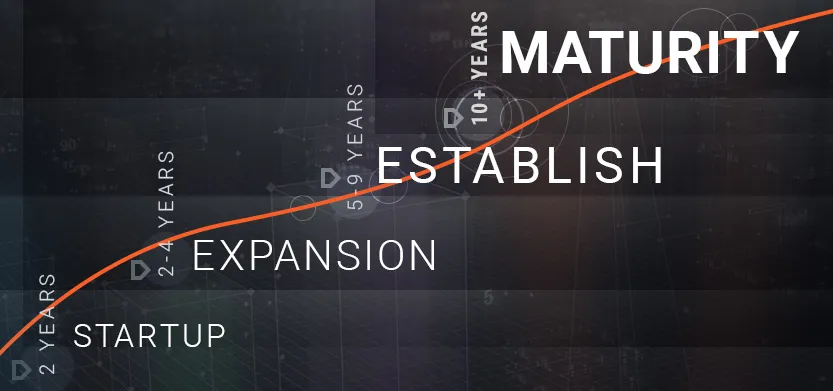
Posted in Digital Commerce, Software & Development
July 21, 2020
5 Requirements for enterprise ecommerce platform selection
As they grow, businesses often seek an open-source approach to ecommerce website design that can integrate with their other solutions, including ERP, fulfillment software, stock and inventory, accounting, and even third-party marketplaces. As their business and digital presence become more complicated, they often find that all-in-one ecommerce platforms may not meet the growing uniqueness of their needs.
Five factors to consider when choosing the best ecommerce platforms at any stage of business growth.
Download our ebook Engineered Ecommerce: A Methodology for more insight >>
If you find your business is experiencing growing pains with your current ecommerce platform, it may be time to upgrade to an enterprise ecommerce platform. But before you take the leap, you’ll want to consider the life stage of your business along with your front-end and back-end needs — that’s because revenue isn’t always the best indication of if your company is ready for an enterprise solution.
Gartner, a leading research and advisory firm, summarizes the four life-cycle stages of a business as follows:
- Startup — Less than two years of operation
- Expansion — Two to four years of operation
- Establish — Five to nine years of operation
- Business Maturity — 10 or more years of operation
Businesses in the Expansion and Establish stages of growth require enterprise ecommerce solutions with expanded flexibility, scalability, and customizable feature sets. Companies who have reached the level of Business Maturity and thrived for more than 10 years may also be looking to refine their processes with increased capabilities.
But what exactly should businesses embracing digital transformation look for in next-level enterprise ecommerce solutions? An organization’s needs vary widely depending on its consumer base, marketing tactics, the expertise of the in-house IT team, and the features required. We’ve identified five factors that businesses in the next-level growth stages should consider when selecting the best enterprise ecommerce platform.
1. Flexible ecommerce design and UX
The user interface and user experience make a significant difference in driving sales and increasing conversions on your ecommerce website.
Few factors affect conversions more than loading speed. According to an infographic from HubSpot:
- A one-second delay in page load speed could reduce conversions by 7%
- A one-second improvement in page load speed could increase sales by $7,000 in one day (assuming $100,000 in sales per day)
- A two-second delay could lead to a 4.3% loss in revenue per site visitor
A responsive design that translates seamlessly from desktop to mobile also enhances the user experience and, as a result, search engine rankings, visibility, and sales.
Other factors that enhance the user experience include:
- Accessibility
- A smooth checkout flow
- Personalization based on search terms, browsing behaviour, and geography
If your business has a high touch-point customer journey or an extremely large and constantly changing inventory, it may be time to move on from one-size-fits-all platforms like Shopify. An open-source solution will allow for both a fully customizable front-end experience and a back-end that is built intuitively to allow your ecommerce managers, IT team and web developers to make changes as needed.
2. Seamless inventory management
What website visitors see affects the overall user experience. But back-end operations count just as much. Visitors who visit a website to place an order, only to have that order shipped late — or worse, cancelled — may not return to do business with your site again.
Reports show:
- 69% of customers may not shop with an ecommerce website again if their item does not arrive within two days of the expected arrival date
- 14% say they might stop shopping with a retailer if an item arrives late just once
With so much at stake, an ecommerce platform that integrates with inventory management to prevent such errors can help retain customers. When considering moving to an enterprise ecommerce platform, this should be top-of-mind, as your business may require a precisely tailored inventory management solution.
3. Integration with preferred marketing platforms
Increasing customer satisfaction and conversions can help your ecommerce business thrive. But where are your customers coming from? An enterprise-level ecommerce solution that integrates with your online marketing efforts helps you track your results so you can spend your marketing dollars where they have the most impact.
On the other hand, disconnected data confuses marketers and consumers alike. It makes it difficult for marketers to analyze the data to deliver the right message. Consumers may get frustrated if seeing the same ineffective ads displayed repeatedly – or, worse, seeing ads for products they’ve already purchased.
An ecommerce solution that integrates your marketing efforts and allows you to customize capabilities can help you test your marketing efforts, track results, and refine your messaging and delivery for increased success.
Similarly, the best ecommerce website builder provides plenty of room to customize integration with consumer review platforms. It should allow you to moderate blog comments and product reviews, incorporate a review system, and establish a workflow for consumer-generated content.
4. Superior internet security
As your ecommerce business ages, its visibility will increase. Your SEO rankings will improve, exposing your company to all kinds of new audiences — hackers included.
Reports say the larger the business, the greater the odds of a cyber attack, with 66% of businesses with more than 250 employees reporting an attack. Medium and smaller businesses reported attacks at a rate of 50 percent and 42 percent, respectively. Whether your company increases in size, revenue, or longevity—or all three, you need a secure ecommerce platform to protect your customers and your business.
Look for a platform that meets Open Web Applications Security Project (OWASP) standards to protect against the top 10 identified security risks and has a team that continuously susses out and addresses vulnerabilities.
5. A robust feature set
Do you need the capability to:
- Customize subscriptions?
- Create individual customer dashboards?
- Automate monthly payments?
- Customize checkout flows?
- Allow a variety of payment platforms?
- Integrate with third-party programs and specialized software?
Finding the right enterprise ecommerce platform requires a thorough evaluation of your company’s needs, so consider the list above as a jumping-off point for a larger audit. It is crucial to have a clear understanding of the features you need before you undertake migrating your business to a new platform, otherwise, you’ll need to do it again sooner than you’d otherwise like to. Any good enterprise ecommerce solution should check all of your current boxes, and have the capability to become more robust as your business continues to grow.
Final thoughts
If you’re about to reach your next business stage, it may be time to adopt a highly flexible ecommerce platform that can ensure scalability and a positive user experience in today’s rapidly changing digital landscape. As you get ready to make that leap, be sure to keep each of these five factors top-of-mind to ensure you are able to invest in technology that will allow your business to continue its forward momentum with as little friction as possible.
Dawn Allcot is a full-time freelance writer specializing in technology, ecommerce, and finance, and is the owner of boutique content marketing agency Allcot Media.


